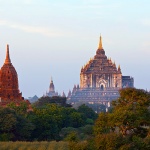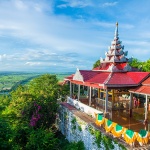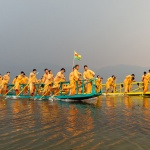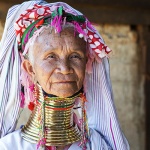Myanmar is wealth of different cultures. If you are looking to experience the cultural side of it, we promise to make you happy. There are 135 distinct ethnic groups in Myanmar with their own culture and traditions. It is reflected in everything they do: cuisine, dressing, faith, occupation and much more. We welcome you to enjoy the diversity of Myanmar’s traditions.
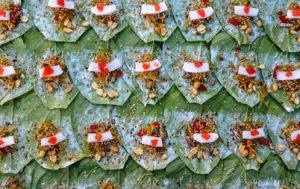
Betel
Myanmar Betel or Kun Ya is made up of betel nut, slaked lime and catechu which are then wrapped up in a betel leaf., but the recipe inside the betel leaf changes from shop to shop and some shops input tobacco, chilli and jam. Its taste is a little bitter and has to be savoured while chewing slowly. There are many little betel shops located all over the country. You must try Kun Ya or Betel when you are in the country.
Cigars
Myanmar cigar or cheroot is a roll made with the dried leaf of carbia myx (Thanet Phat) or corn. Insides the leaf is a mixture of dried wood and tobacco. The old people in Myanmar rolled their own cigars to suit their individual taste. Cigars come in different sizes and the smallest one is a little bigger than cigarettes. There are many cigar factories in Myanmar especially in the tropical zone.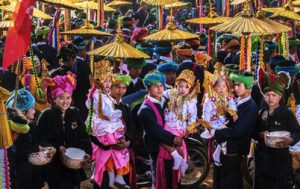
Novitiation Ceremony
The ceremony is mostly held before July and August, and during the summer vacation between March and May. To become a novice, three stages must be passed - shaving hair, wearing a robe and believing in Buddha. Buddhist parents in Myanmar believes that they will not suffer in hell if their sons become a novice for at least once in their lifetime.
Pathein Umbrella
The beautiful and colourful Pathein umbrella represents the Myanmarese feminine beauty. The canopies of the umbrella are made with cotton, silk and beautiful artistic floral painting on them. The shaft and ribs are made of bamboo which can be obtained from Rakhine Yoma Mountain Range near Pathein.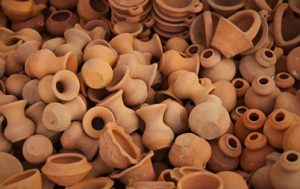
Pottery
Pottery has been the earliest craft in the history of human civilisation. For 2,000 years, the Myanmarese have used pottery to store and cook food. Pots can be produced cheaply and are useful in many ways even though they are fragile. Nowadays, the main pottery workshops in Myanmar are located in riverside towns.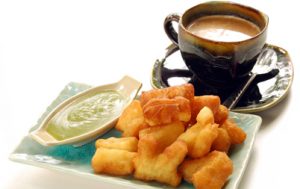
Tea Shops
You will find tea shops in every street corner in Myanmar. Tea is a common drink for the locals and you must taste it when you are in the country. The traditional tea is a potent combination of strong black tea leaves mixed with evaporated and condensed milk and is delicious.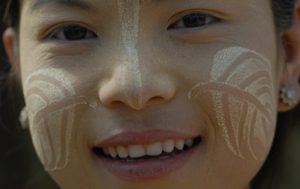
THANAKA
Thanaka is a yellowish-white cosmetic paste made from ground bark. You will find the locals, especially women and girls use it extensively on their face and arms. The reference of Thanaka can be found in a poem written by King Razadarit during the 14th century. The wood from different trees can be used to create Thanaka. The trees must be perennials and at least 35 years old to produce good Thanaka.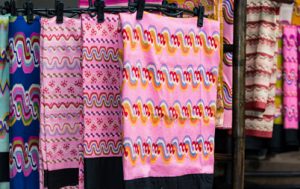
Traditional Dress
Longyi is the native dress of the Myanmar People. Ideal for Myanmar’s humid climate, this versatile long wrap-around cloth is traditionally worn by both genders with distinct features separating the two. The Longyi worn by men is called a Paso while those worn by women are called a Htamein. A Paso usually comes in stripes or checks and can even be worn inside out while a Htamein comes in countless floral and coloured designs.WELL-KNOWN ARTS & CRAFTS
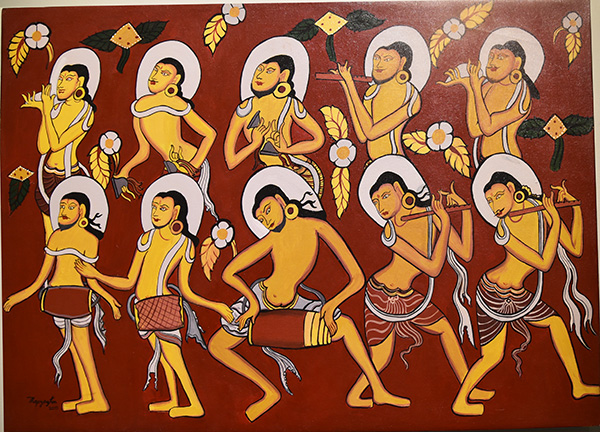
PANCHI
Panchi refers to the art of painting that illustrates live animals and inanimate objects using different colours. Artists paint the figures of human beings, animals, objects, drawings, scenery designs, cartoons and caricatures human scene. These paintings originated from Bagan and hold a lot of influence of Buddhism. If you want to explore paintings in particular, you should visit Bagan where you will find ancient traditional paintings and masterpiece of A.D 11th Century. Wall painting sculptures in Bagan are the best representations of Panchi. Paintings of Konbaung Period are lively, beautiful and colourful, especially the wall paintings in Mahamyatmuni Pagoda at Mandalay which are sculptures of Yadanarpon Period.
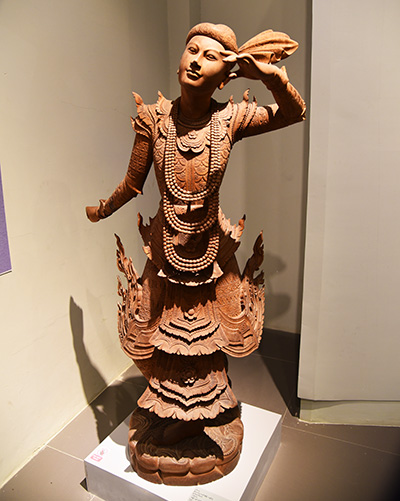
PUNPU
Punpu is the art of creating sculptures, figures and floral motifs from wood. Myanmar’s craftsmen are highly skilled in carving materials ranging from bone, jade, stone and especially wood. They can make the figure of human beings, animals and floral motifs from any material. They are especially skilled in crafting Buddha images or figurines using wood. If you want to explore the Punpu art of Yadanarpon Period in Myanmar, you must visit the Shwe In Bin Monastery in Mandalay, Bargayar Monastery in Innwa. A wooden sculpture from the Bagan period is the oldest pagoda Shwezigon portal in Nyaung-U.
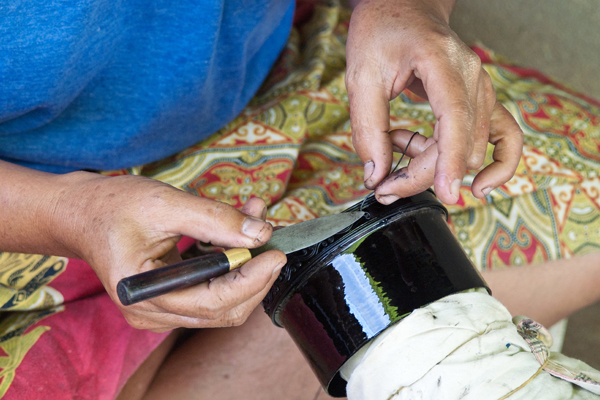
PANYUN
Panyun means an art that produces materials in bamboo, wood and thick blackpaint (thit-se). Lacquer ware, known as Yun in Myanmar refers to a process that uses natural organic ingredients to decorate anything from a chest of drawers to a mug. What sets it apart is the immense time and skills required to finish a single piece. Each item is first crafted using bamboo or wood. Then a detailed process of application is followed by a resting period often in an underground cellar for up to ten days. On a detailed framework of process, finely cut strips of bamboo, mixtures of thit-see resin with clay and ash are carefully built-up and finally polished with the ash of fossil wood. The designs are then etched or painted by hand. The most traditional Burmese lacquer ware is of a unique terracotta colour with scenes from the Jataka Stories, the Buddha’s former existence. Bagan is the home of this craft. Lacquer-ware craftsmen commonly produce alms bowls (bowls for monks), food bowl, tea bowl, bowl for pickled tea, drinking cups, traditional betel box (especially held at the Myanmar Houses to serve guests), cigar boxes, etc. As with most other artistic aspects of Myanmar PanYun industry, Lacquer ware forms an important part of social life.
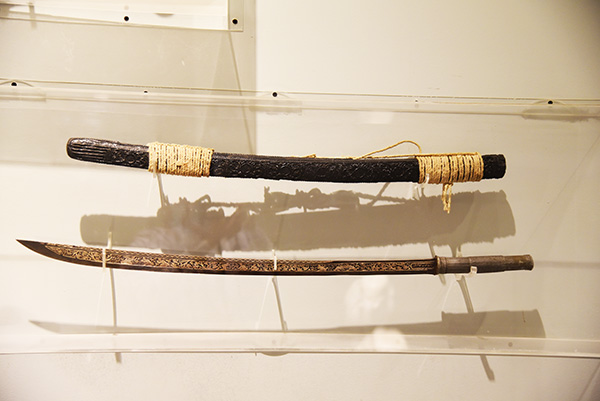
PANBE
A part of the artistic wonders of the world, Panbe is a kind of blacksmith who create various products using iron, heated in the oven. They make iron axles used in oxcarts, rubber, hammer, ax, various kinds of knives, swords, hoe, dig hoe and scissors. The metal industry of the country was started during the middle period of Bagan and Yadanarpon Periods. Head to Inlay region to catch the interesting site of Panbes in action. Don’t forget to buy a memento for your trip!
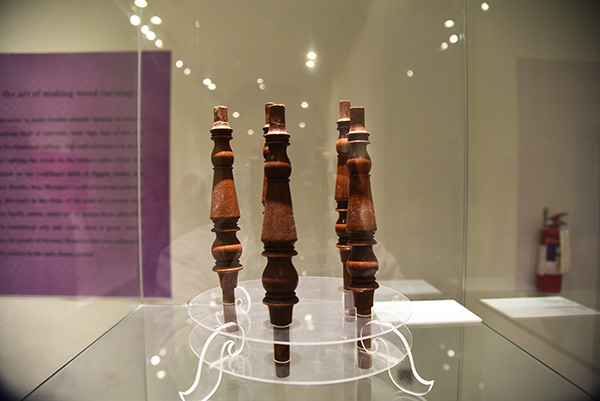
PANPOOT
The art of Panpoot is an art of making wooden utensils by using turners lather. The end products include the shaft of an umbrella, table legs, legs of the bed, guardrails and turnery posts for pavilions and railings. This traditional craft began at the Bagan period in the 8th century A.D, Ava and Yatanarpon period. The variety of products produced using this art is very interesting and includes food containers, boxes, bowls, tables and chairs, apart from what has been mentioned earlier. They look extremely attractive. The Panpoot art exhibits a heavy influence of the Mon culture.
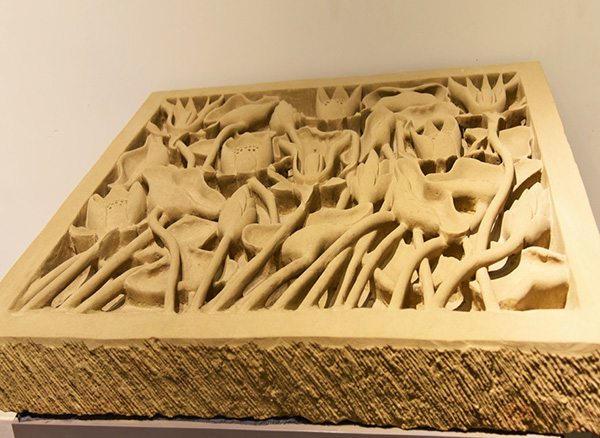
PANYAN
Panyan means constructing a building using bricks, stone and concrete. The Masons, commonly known as Panyan men build houses, pagodas, bridges, and many more. Myanmar’s traditional masonry work is well-known for the ancient pagodas and other religious buildings around the Bagan Area. The country’s traditional masonry of Bagan period is the best developed among all the other historical periods. The craftsmanship exhibits remarkable strength, beauty, volume, detail and decorations. Myanmar’s traditional masonry has derived from the Mon People’s culture of Suvanna Bhumi Region. It is known that masonry in Myanmar was first started during the Pyu period of 1st century A.D.

PANTAUT
Pantaut refers to the craft of making decorative designs embossed in stucco. The craftsmen carve figures of lions, dragons and floral patterns with stucco. Myanmar traditional stucco carving emerged before the Bagan period and it was widely practised during the Bagan, Amarapura and Yadanarpon period. According to historic records, stucco works were very famous during the Bagan period and had detailed decorations. After the Bagan period, stucco carvings of mid-Konbaung or Amarapura period exhibited finesse in authentic Burmese style. The curled leaves and buds look very beautiful. You can explore this culture at the Menu’s brick monastery at Innwa. The great building itself is a work of art to command our admiration for the Pantaut Art.
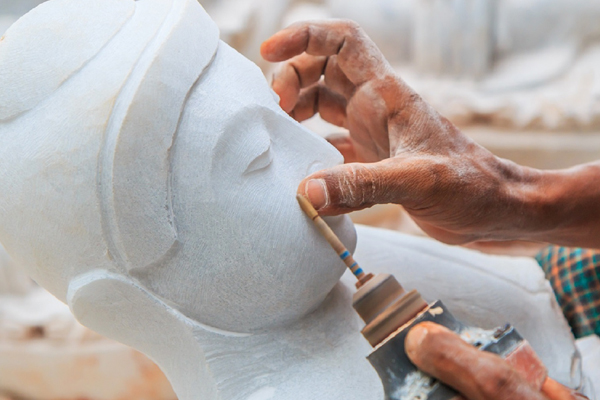
PANTAMAUT
This art refers to the art of stone carving. The craftsmen make many religious items, mainly Buddha images and stone slabs for inscription. Other figures such as elephants, deer, circular flat stone pestle, mortar and table are also made to order. Sculpture in stone is a significant feature of Myanmar fine arts and is considered to be an honour of the local people. There are sculpture workshops in Yangon, Mandalay and other towns, the most notable being near the Mahamyatmuni Pagoda in Mandalay. Fine works of art in stone can be seen at plaques depicting the life of the Buddha at Ananda Temple, Bagan. The great Buddha image at Kyauktawkyi Pagoda at the foot of Mandalay Hill is another example of excellent Pantamaut.

PANTAIN
Pantain is an enterprise of making items of gold or silver. Silversmiths of the country are famous in making drinking bowl, receptacle bowl, prize-cup, shield and belt. Goldsmiths are skilled in making various kinds of jewellery. Myanmar’s traditional art and craft involve artistic creation of gold and silver wares. Creating silverware has been a part of Myanmar for the past 1,200 years. It is indeed something for the country to be proud of. According to the crystal palace chronicles during the reign of King Anawrahta, the relics of Buddha and the three repositories of Buddhist scriptures were brought to Bagan from Suvunna Boumi, the Mon capital. Along with them came Mon artisans and Mon arts and crafts, gold and silverware etc.
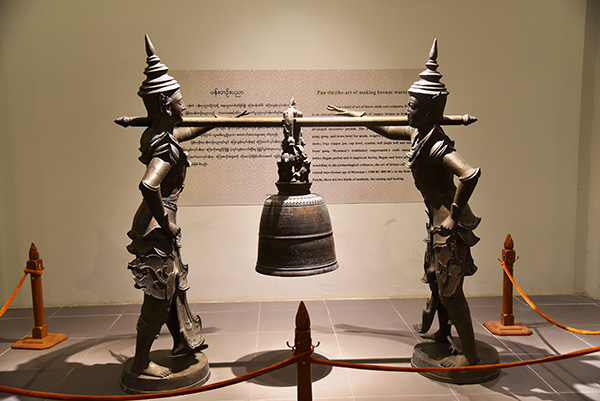
PANTE
This is the art of producing materials of copper, bronze or brass. The artisans carve a range of products from these materials such as the triangular brass gong and brass bowls for the monks, weights in the shape of brainy ducks, trays, copper pots, cups, bowls, dishes, cymbals, bells and small brass gongs. Myanmar’s traditional coppersmith’s craft emerged before the Bagan period and it improved during Bagan and Ava period. Every pagoda in Myanmar has bells which were struck to tell the people about good deeds that are done. They are triangular bells, which twirl when struck and ring with a sweet rising and falling tone which gradually fades away. Moreover, there are gongs slung from carved ivory or wooden elephant trunks which are prized as dinner gongs. Different sizes and shapes of bells, all unmistakably Burmese in design are popular as souvenirs, and so are other castings such as weights and cowbells.
THE ART OF WEAVING
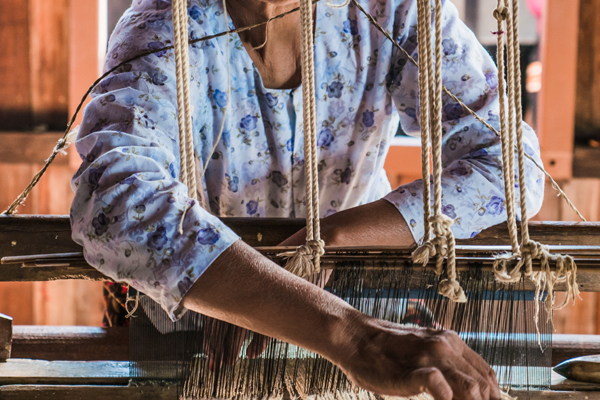
SILK & COTTON WEAVING INDUSTRY
Silk and cotton weaving is one of the main professions of the Amarapura and Bagan People. The cotton is mostly grown in Central Myanmar. First, they make the cotton thread from raw cotton by using a machine, which is operated by hand and weave on the international wooden loom. Over one hundred looms are used to create beautiful and intricate designs and patterns as silk wear is worn in special and ceremonial occasions. Being a famous and interesting cottage industry, this is something you should definitely experience.
LOTUS WEAVING AT INLE LAKE
One of the highlights from Inle Lake is the lotus weaving industry. Lotus weaving is the main profession for many people who live near Inle Lake. Many years ago, women from Inle began weaving textiles using fabrics obtained from lotus flowers. There are many villages where this art is practiced out of which Phaw Kone and Kyaing Khan Villages are most famous. You can visit these villages to understand how this art is done.
The whole process from the beginning to the end is really amazing. Most old women cut the lotus stem into small pieces and extract fibre by hand using a knife. Then these fibres are moistened and rolled together to obtain threads. To finally produce the long, fine threads used to weave lotus, the above process is repeated again and again. Workers need to be very patient because all the processes are equally important. This industry is very labour intensive and hence lotus weaving products are among the most expensive textile products in the world. They are ideal for gifting.
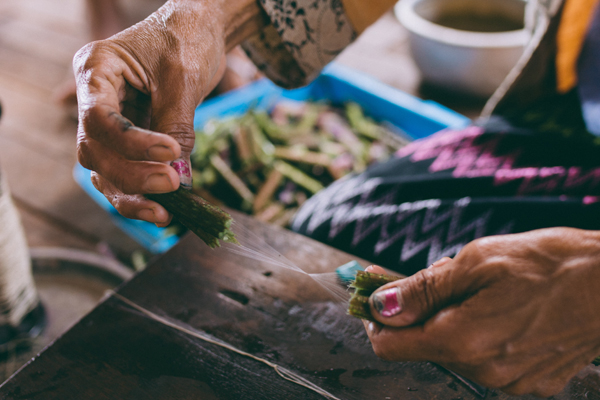
MUSICAL INSTRUMENTS & TRADITIONAL DANCE
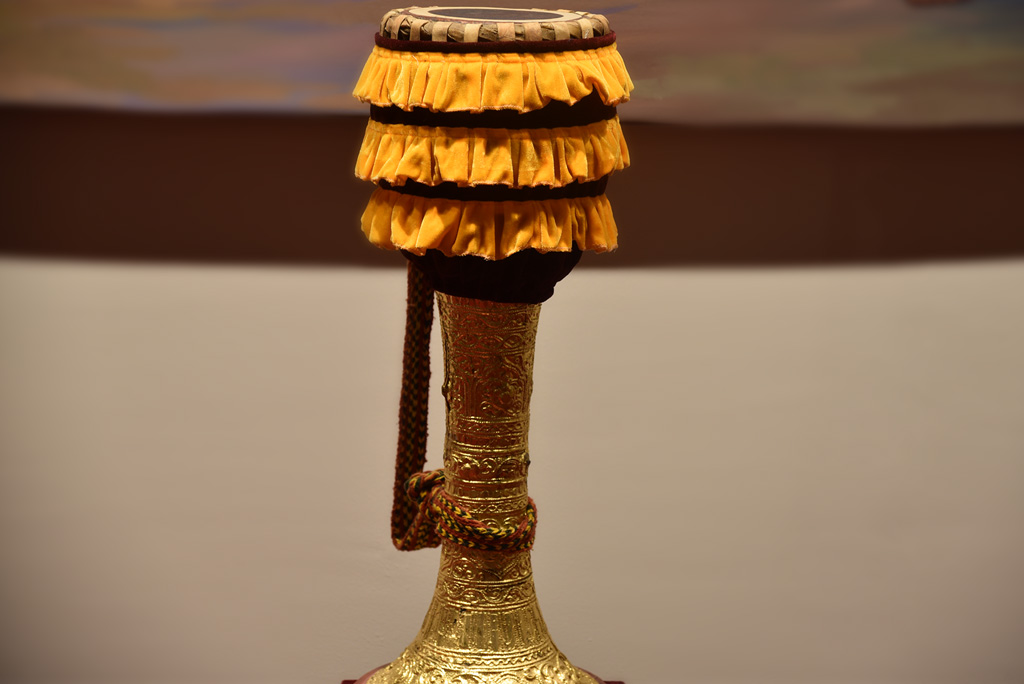
OO ZI
The pot-drum (Oo zi) is a single-headed drum on a long hollow stalk which is flared at the bottom. That single head has a membrane tightly stretched over a round frame. The pot drum is tuned by sticking a piece of tuning dough made of rice and ash to the head. The pot-drum is the chief instrument for the lively pot-drum dance and is played for group dancers as well. Though the pot-drum is single-headed, it can be played to produce a complete set of sounds.
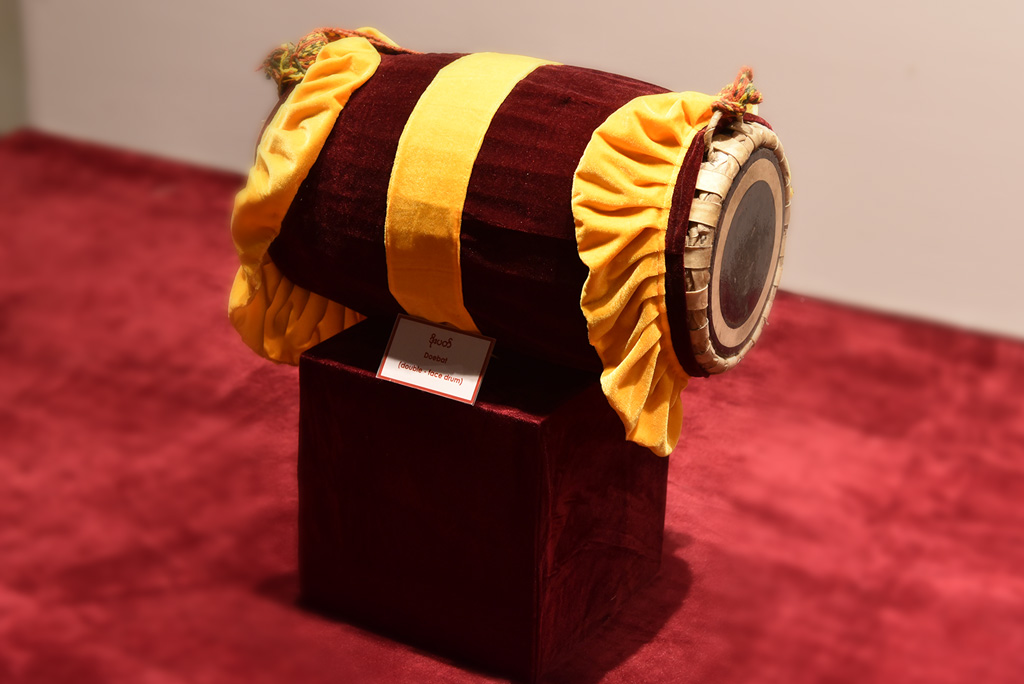
DOBAT
The double-headed slung drum (Dobat) is the most popular musical instrument in the countryside. Dobat can be played on both sides. The left side of the drum is called the female side and the opposite side is the male side. The female side is tuned to the fundamental (taya) while the male side is tuned to the dominant (tayo). The female side requires more tuning dough. A Dobat is played briskly and joyously. The player uses both hands to strike the drum so that the left hand hits the female side, and the right hand strikes the male side. Fingers, palms, or the heels of palms, and sometimes elbows are used. It was mostly played by Myanmar farmers for inviting the harvest time or to call for rain. It can also be seen at pagoda festivals, charities and at labor contribution functions when the villagers come out to build a road or to reap the harvest.
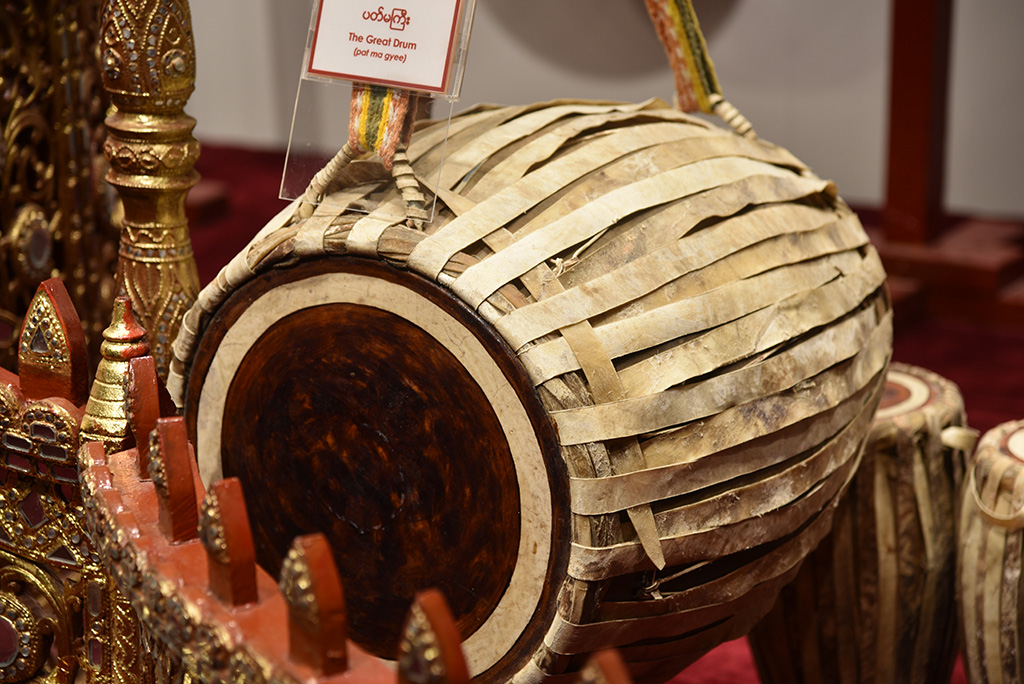
PATMA
The principal drum or Patma is a part of the Saing Wine (Myanmarese orchestra). It used to be hung on a horizontal beam placed on tripods, but now it is placed on a long piece of hard bamboo with nodes at short intervals. The beam assumes five components of a pyinsa-rupa, a mythical animal with a serpent’s head, the antlers of a deer, the hooves of a horse, the wings of a birdlike creature (galon) and the tail of a carp (ngajin). When the Patma is played together with the large cymbals, it sounds most effective. The musician who plays the Patma in the ensemble is also responsible for the six small graduated upright drums and the medium horizontal sakhun.
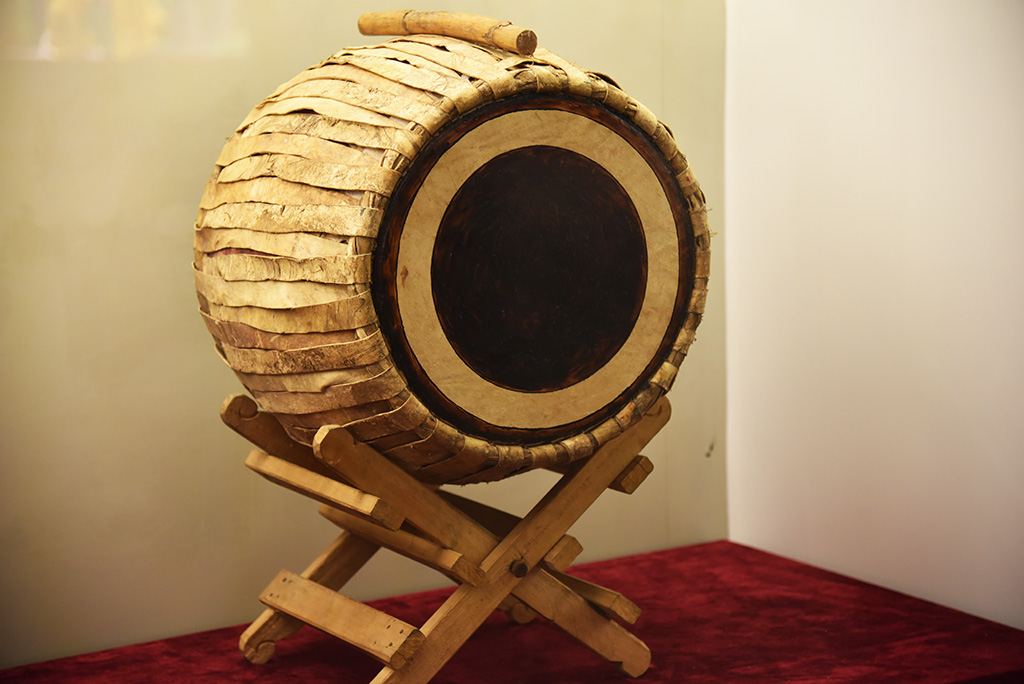
SIDAW
The royal drum or Sidaw was played on royal occasions, auspicious gatherings, and for favourable portents in the villages. Historically, the Sidaw was played as a part of palace rituals and during royal ceremonies and occasions. It was played during the entrance and exit of the king and queen into the Audience Hall, or when the monarchs were attending grand dramas or marionette shows. The Sidaw was also played at ploughing ceremonies, city visits, and ceremonies marking the beginning and end of the sitting of the Hluttaw. Gift presentation ceremonies were also marked by use of the Sidaw, as was the beginning of the Thingyan Water Festival.

PAT WAIN
The centre of each Burmese ensemble, giving name to the idea of instruments hung up in a circle “hsain wain”, is the pat wain drum circle. This instrument consists of 19 (traditionally), or 21(after 1920) tuned drums with heights ranging from 13 to 41 cm, hung from a circular wooden rack or stand with the player in the middle. One of the most fascinating aspects of South East Asian music is the idea of the melodic use of percussive instruments, such as the drum circles, gong ensembles and xylophones. The drums in the pat wain get tuned by filling in “pa sa”, a paste of rice and ashes. The more pa sa is filled, the lower the drum will sound. The pat wain player is known as “hsain hsaya”, which means he is the “master of hsain” and thus the main leader and director of the complete ensemble.
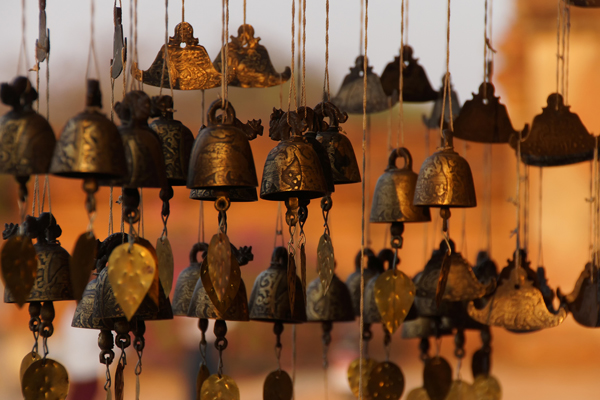
KYEY SE
The Kyey se (“kyeezee”) gong is also sometimes called the “Burmese bell”. It is a flat, triangular solid brass gong which appears in many ensemble performances in different shapes and sizes. It can also be found in ceremonial use in temples, or even with monks when they walk down the streets in the morning to beg for alms. A wooden mallet is used to hit the gong on the left or right side of the triangle, so that it starts spinning with a high tempo and thus creates a vibrating sound. Depending on the size and the corner where it is hit, the pitch changes. It is famous for its long sustaining tone.

SAUNG
A “harp” is called a “saung” in Myanmar. There are basically two types – the Byat Saung and Saung Gauk (bent harp). The Saung is an arched horizontal harp where the resonator body is more horizontal compared to the Western harp, which has a vertical resonator. The harp is played by sitting on the floor with its body in the lap, and its arch on the left. The strings are plucked with the right hand fingers from the outside. The left hand is used to dampen the strings to promote clarity and produce staccato notes. The main parts of the harp are the body, the long curved neck, carved out of the root of a tree, and a string bar running down the centre of the top of the body. The top of the resonator body is covered with a tightly stretched deer hide, heavily lacquered in red with four small circular sound holes. The neck terminates in a highly decorated representation of the bo tree leaf. The harp body and stand are decorated with pieces of mica (“Mandalay pearls”), glass, gilt and red and black lacquer. The saung’s strings are made of silk or nylon.
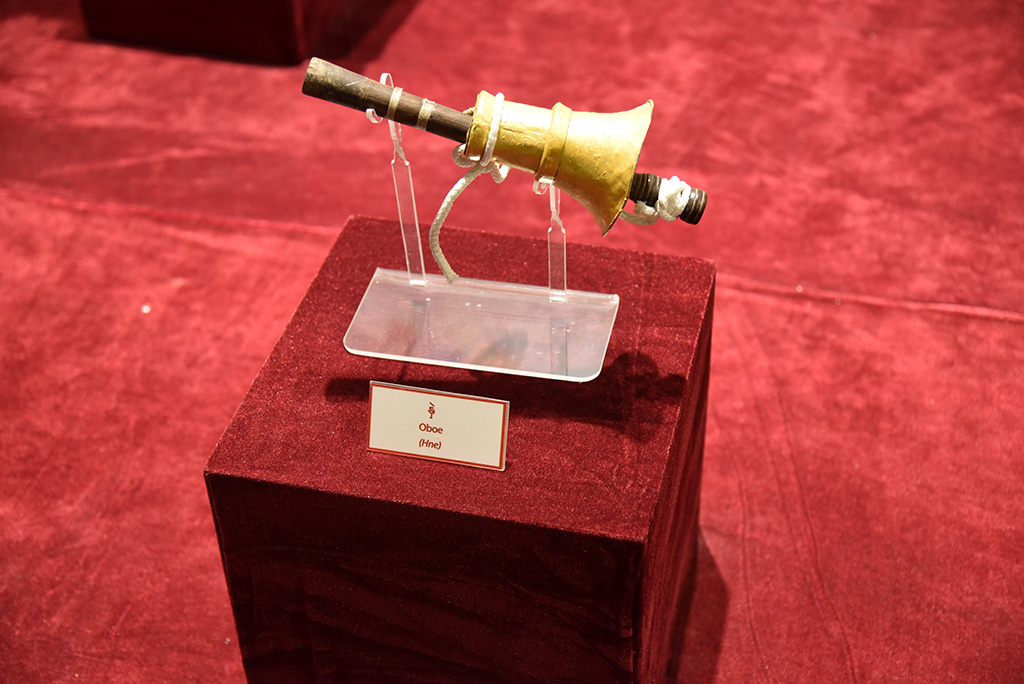
OBOE
The Hne is a multiple reed oboe with a remarkable crooked form. It has seven nearly equidistant playing holes which are basic for the development of the main Burmese scales in both chamber and ensemble music. There are two common sizes of the hne, “ci” (big) and “kalei” (small) which are used for different purposes. The bigger one is for slow tempo and the smaller one is for festive occasions. Sometimes the bamboo flute “palwei” accompanies the “hne” during festivals as it also has equally set playing holes resounding in the same scale.
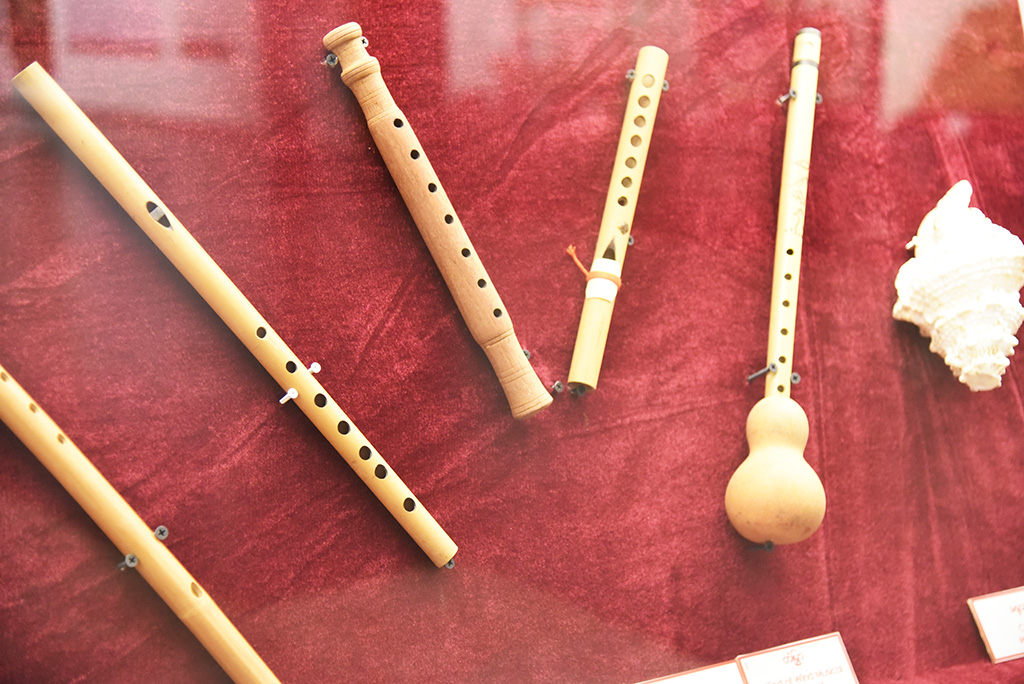
FLUTE
The flute (hne) is one of the traditional wind instruments in Myanmar. It has been used in Myanmar since ancient times and is created by using a metal horn, a wooden flute and a palm reed. The oboe is a double-reed woodwind instrument having a high pitch and penetrating tone. There are two kinds of Myanmar oboe namely big oboe and small oboe. Big oboe has more bass than the small. Big oboe has been used in Myanmar for many years and is said to have come into use as early as 211 AD. It is used to play melodies, particularly in Byawsi, Yegin, Nayi, Thapyay and Yadu music. The small oboe has been commonly used from 1290 and 1300 in the Myanmar era up to now.
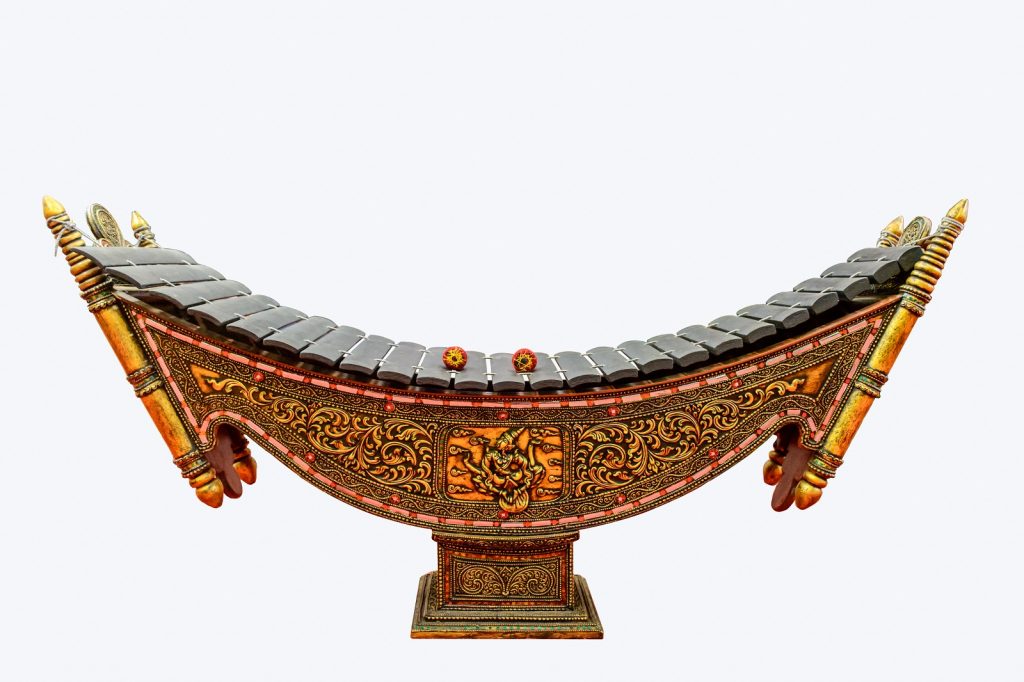
PATAL – XYLOPHONE
The name Patala means a musical instrument with which you can play all ranges – from the crescendo to the bases. Patala instruments are usually the War Patala or Wood Xylophone and Pattalar, the Burmese bamboo xylophone. These are ancient musical instruments. Old versions of these instruments had a sound box underneath, with seven graduated keys. The xylophone is played with two sticks wrapped in cloth. The Bamboo Patala consists of 24 bamboo plates placed above a resonating box, starting with the lowest pitch on the players left side and the highest pitch on the player’s right side. The plates get beaten by two mallets, actually tuned in a diatonic scale and ranging over three octaves.
TRADITIONAL DANCES AND FOLK DANCES OF MYANMAR
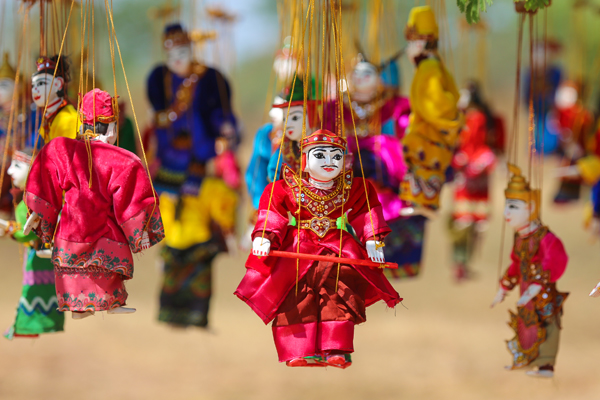
TRADITIONAL DANCE
Traditional dance in Myanmar is supple, graceful, elaborate, well-refined and floral. What makes it even more unique is that every dance movement draws inspiration from flowers. A flower is believed to resemble a dancer. The bloom is the head. The leaves are the hands and the stem the body. In the gust of a gentle breeze, the flower comes alive and dances to the accompaniment of nature. This purity of movement often forms the foundation of traditional dance in Myanmar.
FOLK DANCE
Based on the changing seasons and fertile lands, folk dance in Myanmar has always been an integral part of farming communities. As such, most folk dances reflect everyday life with songs and lyrics that flow with the movement of the dancer. A popular folk dance is U Shwe Yoe, a comic act that portrays the dancer dressed as a typical Myanmar gentleman with a long neatly trimmed moustache holding a Pathein Parasol, a scarf around his neck, a spotted turban or headgear, and a square patterned sarong around his waist. In the dance, he makes comic faces as he holds a lady’s gestures that dramatize his search for a young attractive girl. Always a popular act, his antics are an eagerly anticipated item on every agenda.
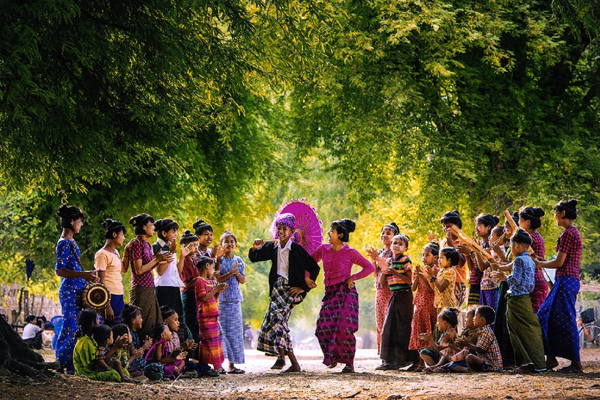
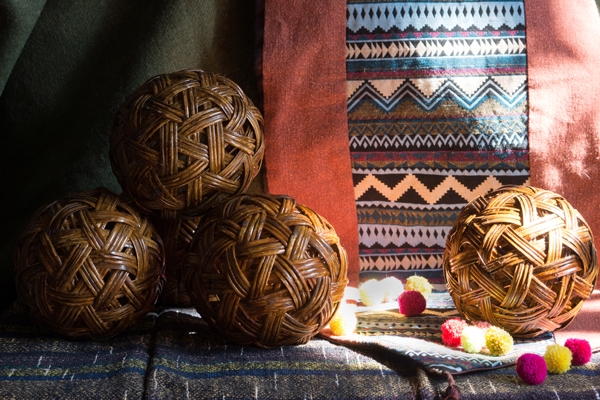
CHINLONE
Chinlone, also known as cane ball, is the traditional, national sport of Myanmar and a combination of sports and dance. It is a completely non-competitive game, with typically six people playing together as one team, with no opposing teams. Although there is no competition, it is a highly demanding sport that requires skill and teamwork. The ball they use is usually made from hand-woven rattan (called Chinlone). It is played by individuals passing the ball between each other within a circle, without using their hands. One of the six players moves to the centre of the circle while all other players try to assist him or her by passing the ball that he strikes back to him in a single attempt. The important point of the game is to keep the ball in the air without hitting the ground as much as possible. While playing, a traditional orchestra plays motivational songs and the crowd cheers the players to give their best. An Annual Waso Chinlone Festival is held in a small stadium off the famous Maha Myat Muni Pagoda in Mandalay. This festival takes place for a month around the full moon of Waso.
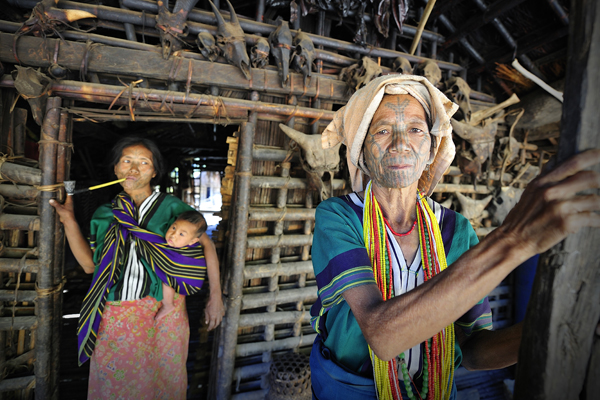
TRADITIONAL TATTOO
Tattooed women are one of the main attraction of Myanmar. Each ethnic group has its own pattern which distinguishes them from one another. No one knows exactly how the custom originated, but one theory is that the tattoos began years ago as a form of identification when women were captured or kidnapped by neighbouring tribes. Another legend is that the tattoos were a way of intentionally disfiguring the woman’s beauty so that they would not be taken to marriage by the Burmese King. Most of them got their tattoos when they were around 12 years old. The whole process can take up to 3 days. The tattoo needles are usually made from bamboo skewers or from thorns. The ink is a mixture of ox bile, soot, plants and lard. The Chin Women are famed for their tattooed faces. Although the tradition of tattooing faces is disappearing, it is still prominent in the southern part of the state, particularly in Mindat and Kanpetlet.
MYANMAR’S PUPPETS
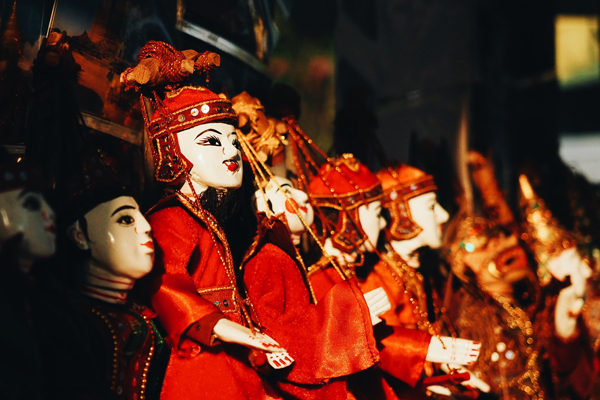
MARIONETTES
A traditional artefact of the country and something that the locals are proud of are Marionettes – Myanmarese puppets. Spend a little time and you may find one that has been discarded from a show. Marionettes showcase character and often have their own story to tell. Beautifully handcrafted, these make wonderful mementoes of your adventures in Myanmar. Puppets or marionettes formed the ‘Yoke-the Pew’ or marionette theatre which entertained kings and royalty during the 18th century.
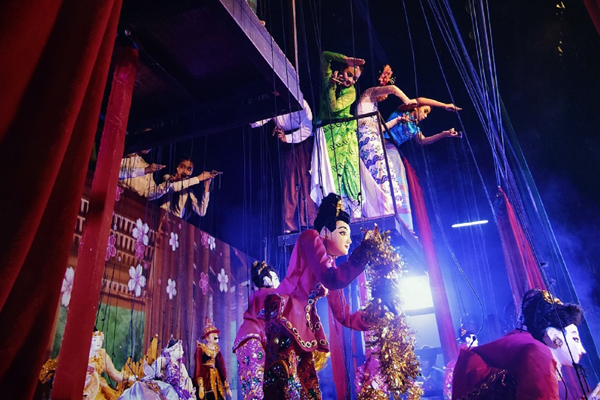
MARIONETTE DANCE
A standard troupe consists of 28 puppets comprising of a cast of animals, kings and queens, courtiers, princes, and clowns. Plots are usually taken from the 550 Jatakas, or from the Ramayana handling these marionettes. The puppeteers also provide the essential accompaniments of songs and narrative to make a complete performance. A rare art of form, marionette theatres still exist in small pockets across the country and is a treat you wouldn’t want to miss.

